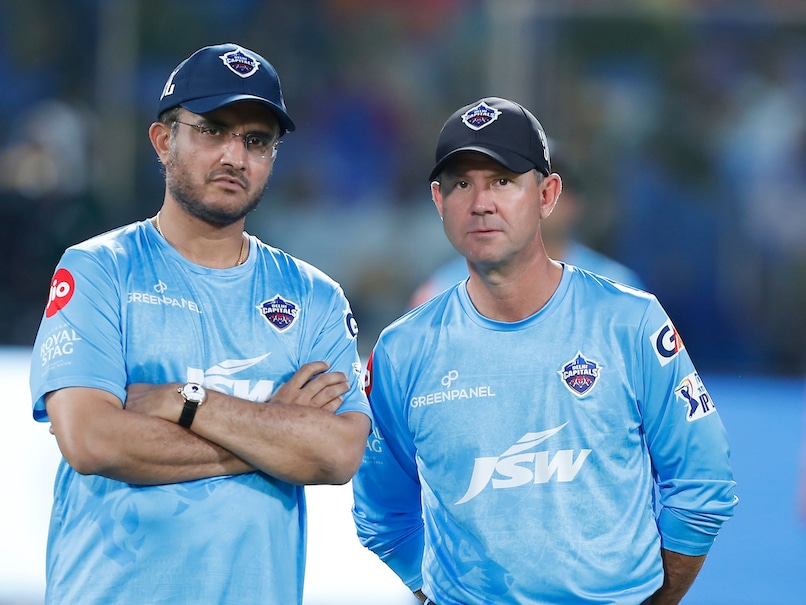“We need to continue being ahead of the curve,” said the Air Force Vice Chief.
New Delhi:
Vice Chief of the Air Staff, Air Marshal A P Singh, on Friday said ‘atmanirbharata’ is “not just a buzzword”, it is something that all stakeholders need to put their heart and soul into, even as he underlined that this ‘atmanirbharta’ cannot be at the cost of nation’s defence.
In his address at a CAPS seminar here, he asserted that “nation’s defence comes first and foremost”.
The VCAS said defending a nation is “everybody’s job and not just the job of persons in uniform”.
Pitching for ‘atmanirbharta’ in defence, he said the DRDO, private industries and others can bolster armed forces’ capabilities in radars, communications and a plethora of other things.
‘Atmanirbharata’ is “not just a buzzword”, it is something that all stakeholders need to put their heart and soul into, and make sure technologies and weapons are developed and manufactured in India, “so that we are not relying on an outside agency who could change its alliance or stop flow of weapons to our country” when the time comes, he said.
Air Marshal Singh emphasised that the “biggest lesson that we have learned from today’s geopolitics is to be self-reliant”.
As they say, there is no permanent enemy or permanent friend, there is only permanent interest, he said.
In his address, the VCAS pitched for fostering greater ‘atmanirbharta’ but with a rider.
“Atmanirbharta is what we are riding on. Majority of contracts are with Indian partners, Indian industry… But, this atmanirbharta cannot be at the cost of nation’s defence. Nation’s defence comes first and foremost,” he said.
“And, if the IAF and Indian forces have to ride on this atmanirbharta, it is only possible if everyone, from DRDO to DPSUs to the private industry, hold our hands and take us on that path. And, don’t let us deviate from that path. Because, when it comes to national defence, there will be compulsions to deviate from that path in case we do not get the things that we need, or the kind of systems or weaponry required to survive in today’s world,” the air marshal said.
He urged that “we all have to work in unison” and at a “much, much faster pace”.
However, the VCAS flagged that “the rate at which we are getting our equipment at the moment, is too low” and there was a need to increase it. “When we look at our adversaries, the rate at which they are growing, the rate at which they are imbibing these technologies and still growing in numbers… we have a long gap to catch up with and this gap is widening further. This is something that we need to look at as a whole and we need to find a solution to this gap that is building,” he said.
During the seminar exhibition on air and missile defence hosted by the think-tank at Subroto Park here, many speakers also spoke about various lessons from ongoing conflicts in the world.
The VCAS in his address also said the ongoing Russia-Ukraine conflict has demonstrated the integration of multiple forces in domains of air, land, sea, cyber, information and space, and how they are “united” to achieve the goal.
“One thing is certain, if we need to do something, we need to stay… in the game, we need to modernise, we need to continue to grow, continue to innovate and we need to continue being ahead of the curve. Otherwise, we lag behind and we are just chasing,” Air Marshal Singh said.
Technological advancements, the rapid pace that is being seen in people’s normal life, has also “infused themselves into our weaponry, defence systems”. Today, what was unthinkable or unimaginable few years back, is a reality, he said, adding, impact on the defence forces, on the warfighting, has made it clear that “we need to be agile and flexible in our thoughts as well as actions”.
The ongoing conflicts that has been alluded about, the Russia-Ukraine conflict, the multi-domain battlespace. It is a “classic example of what is going on today and what we are likely to face in our future conflicts”, the Vice Chief of the Air Staff (VCAS) said.
“This conflict has also demonstrated the integration of multiple forces in domains of air, land, sea, cyber, information, space and how they are united to achieve the goal. I am sure everyone present here, including my friends from other services will agree that the air domain has clearly emerged as a singular trans-domain link and strong force across domains, a strong method for cross-domain application of force. It is not just an enabler, it has become a force multiplier,” he asserted.
The VCAS also referred to the Israel-Hamas war to underline the importance of air domain.
Even in the urban warfare construct that is seen in Israel-Hamas war, the air domain has been used extensively, whether it is utilising those fighter aircraft with precision weapons or the formidable Iron Dome (air defence) system or utilising those low-cost rockets and loiter munitions by Hamas in challenging that very formidable and very costly system itself, he said.
The VCAS also said that in this highly dense battlespace, “we need to put in place plans to have optimal and innovative utilisation of available resources, and at the same we need to ensure we are improving our systems through upgrade or procurement”.
Keeping an eye on the future, the IAF has operationalised a dedicated Weapon Systems (WS) Branch and a sub-branch of this is going to be dedicatedly responsible for surface-to-air guided weapons, he added.
(Except for the headline, this story has not been edited by NDTV staff and is published from a syndicated feed.)



















